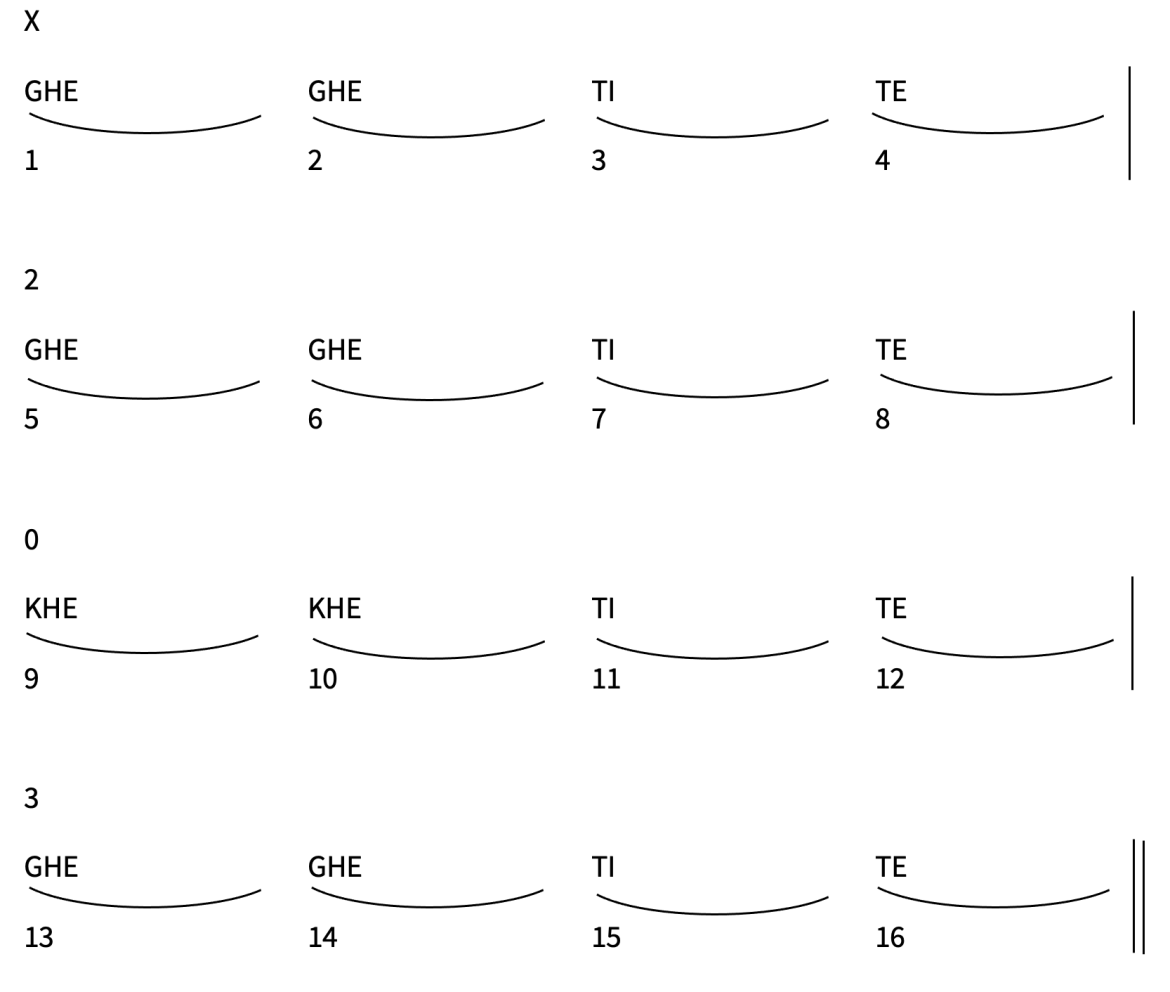Play short, easy pieces from appropriate notation/ symbols
Introduce and demonstrate notation using appropriate repertoire, e.g. Exercise 1:
While Tabla playing is learnt exclusively by ear in traditional settings, notation systems have been developed which can be used to support learning if the teacher feels this is beneficial. There is no single standard method of notation, and this resource presents two options from which teachers can select the one that is most appropriate for their learners. Using notation can make teaching more inclusive, helping those who are not familiar with Indian classical music to learn the time cycles and understand how the music is structured.

In this notation system:
- The beats (matras) are numbered and grouped into divisions called vibhags, marked by bar lines. In the example above there are 4 vibhags of 4 matras each.
- The tali (accented beats) and khali (unaccented beats) indicate the beginning of a new vibhag and are marked by a clap (tali) or wave (khali). The X, 2 and 3 mark the beginnings of the tali vibhags (with X marking sum, the first beat of the time cycle) and the 0 marks the beginning of the khali vibhag. (For more information on tali-khali, see P1-D2)
- Double lines mark the end of the cycle
- The curved lines underneath indicate how many bols are in each matra (beat). In this example, there is only one bol per beat; however, as rhythmic complexity increases there may be more, such as in Kaida 1 in P2-B2.
Select pieces for learners from a range of different times and places, and in a variety of styles. Take into account:
- the musical and technical skills that will be needed
- opportunities to develop musical ideas
- learners’ prior experience
- their personal response to the music
- their general musical interests
Show learners how to practise their pieces and make improvements.
Adopt the holistic approach to teaching and learning.
Explore the progression of this Learning Objective
Continue exploring the current Programme of Study